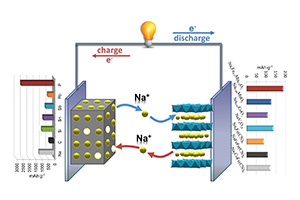

电化学储钠材料的研究进展
收稿日期: 2013-03-27
修回日期: 2013-05-28
网络出版日期: 2013-06-05
基金资助
国家973计划项目(No. 2009CB220103)和国家自然科学基金项目(No. 21273167)资助
Electrochemical Na-Storage Materials and Their Applications for Na-ion Batteries
Received date: 2013-03-27
Revised date: 2013-05-28
Online published: 2013-06-05

钱江锋 , 高学平 , 杨汉西 . 电化学储钠材料的研究进展[J]. 电化学, 2013 , 19(6) : 523 -529 . DOI: 10.13208/j.electrochem.130351

/
| 〈 |
|
〉 |